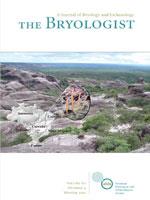A monograph and the first phylogenetic study of the moss genus Hymenodon (Orthodontiaceae: Bryophyta) is presented based on morphological and molecular data. Evolutionary patterns are evaluated using phylogenetic analyses that incorporate newly acquired and assembled morphological (30 characters) and molecular sequence (rps4 gene and partial rps4-trnS intergenic non-coding spacer) data. Parsimony and maximum likelihood methods were applied for phylogenetic analyses using Leptotheca boliviana, L. gaudichaudii, Orthodontium lineare, and Orthodontopsis bardunovii as outgroups. The genus Hymenodon and sect. Hymenodon were both found to be monophyletic, whereas Hymenodon sect. Polystichella was found to be paraphyletic; thus, the sections are not upheld in this new classification. Hymenodon chenianus was nested within the H. pilifer subspecies. As Hymenodon chenianus is morphologically unique, and there are several characters that can distinguish each subspecies of H. pilifer, H. pilifer subsp. sericeus and H. pilifer subsp. tenellus are reclassified at the species level, as H. sericeus and H. tenellus, making a total of eight accepted Hymenodon species. Six species occur in Australasia (Malesia, southeastern Australia, Tasmania, New Zealand, and New Caledonia), while two species are found only in the Neotropics (one in continental Latin America and one in the Caribbean). The known range of Hymenodon aeruginosus is extended into Panama, Colombia, and Paraguay. Taxonomic history, synonymy, species descriptions, distribution, habitat information, and a dichotomous key to the species are provided.
How to translate text using browser tools
20 November 2012
A monograph of Hymenodon (Orthodontiaceae)
Michael Tessler
ACCESS THE FULL ARTICLE

The Bryologist
Vol. 115 • No. 4
Winter 2012
Vol. 115 • No. 4
Winter 2012
Bryophyta
chloroplast DNA
classification
phylogeny
systematics




